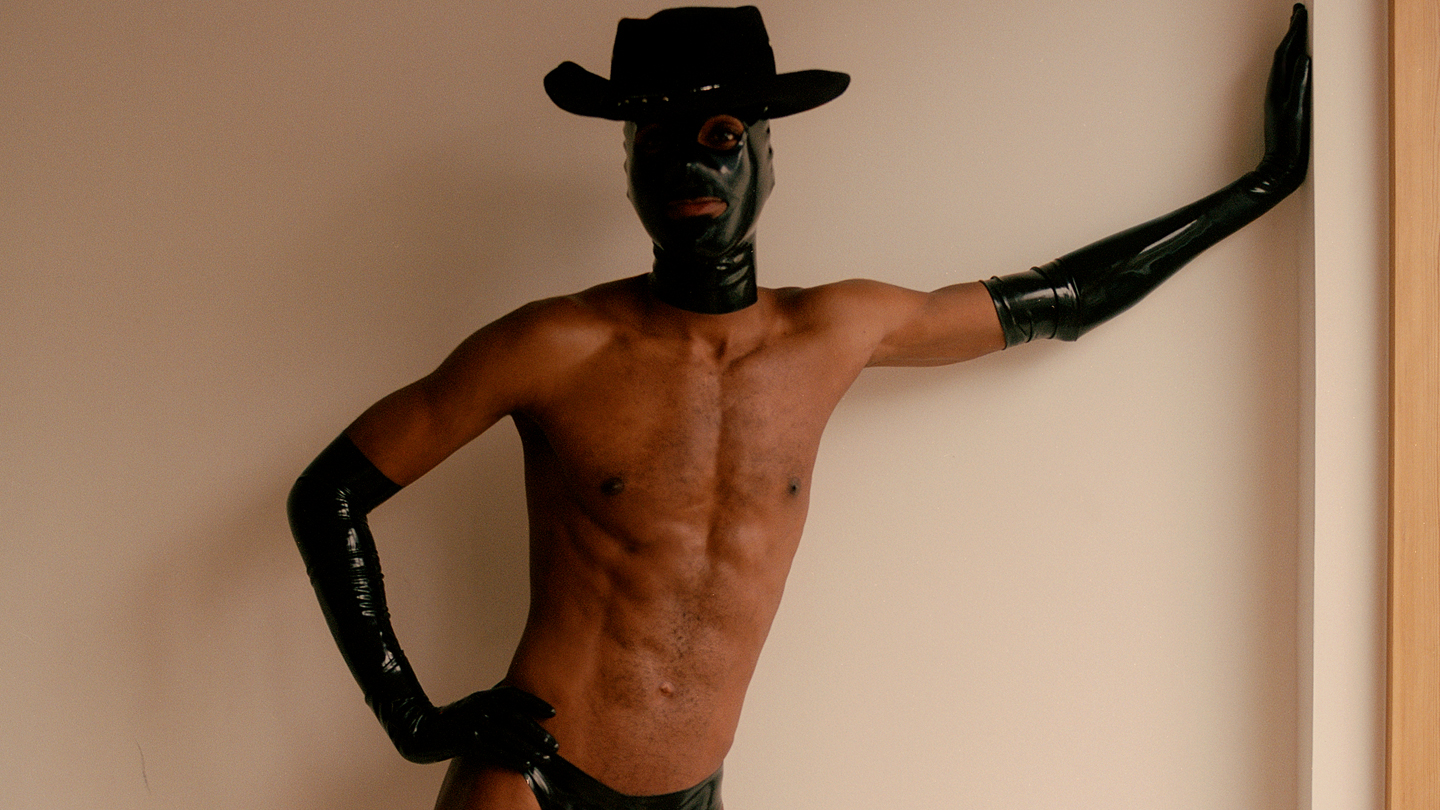For a world that purports to be accessible and inclusive, LGBTQ+ media can be worryingly prescriptive. It’s not uncommon to hear phrases like ‘no fats, no fems, no blacks, no Asians’, or problematic notions like “he’s too gay to be black or too black to be gay”. Far from pushing the boundaries of what’s beautiful, sexual or even acceptable, the depictions of LGBTQ sexuality — particularly for black gay men — have become stagnant.
That state of affairs is what CSM graduate Kacion Mayers is railing against with his new unapologetically black, unapologetically gay, unapologetically sexual magazine, DICKPRINT. In an effort to rebuild what’s currently missing for mainstream gay media culture, the inspiration behind DICKPRINT came from Kacion’s frustration with what is viewed as sexy on gay black men. That frustration has since blossomed into over 250 beautiful pages of fashion, fetishism, nudity and intergenerational education. Working with i-D fashion editor-at-large Ibrahim Kamara and stylist Ola Ebiti, Kacion’s creation captures the true energy and essence of gay culture through the eyes, mind and body of the black gay man.
Although the intersection of fetishism and fashion isn’t new, DICKPRINT presents it in a unique, authentic way, steering clear of deliberately provocative risqué reads. Features include Pimp My Gimp, which celebrates gimp masks and butt naked fashion, and Fashion Week is Cumming, a satirical on the industry’s sex obsession with imaginary Grindr profiles for designers and collections. For Kacion, this magazine was more about the fetishisation of black bodies, both in mainstream media and also on dating apps like Grindr. The sexual racism he’s combating with DICKPRINT is a lot more covert and nuanced than that, and to the untrained eye, it can even go unnoticed.
Ahead of the magazine’s first issue release on July 9th, we sat down with Kacion to discuss fashion, fetishism and of course — dick prints.
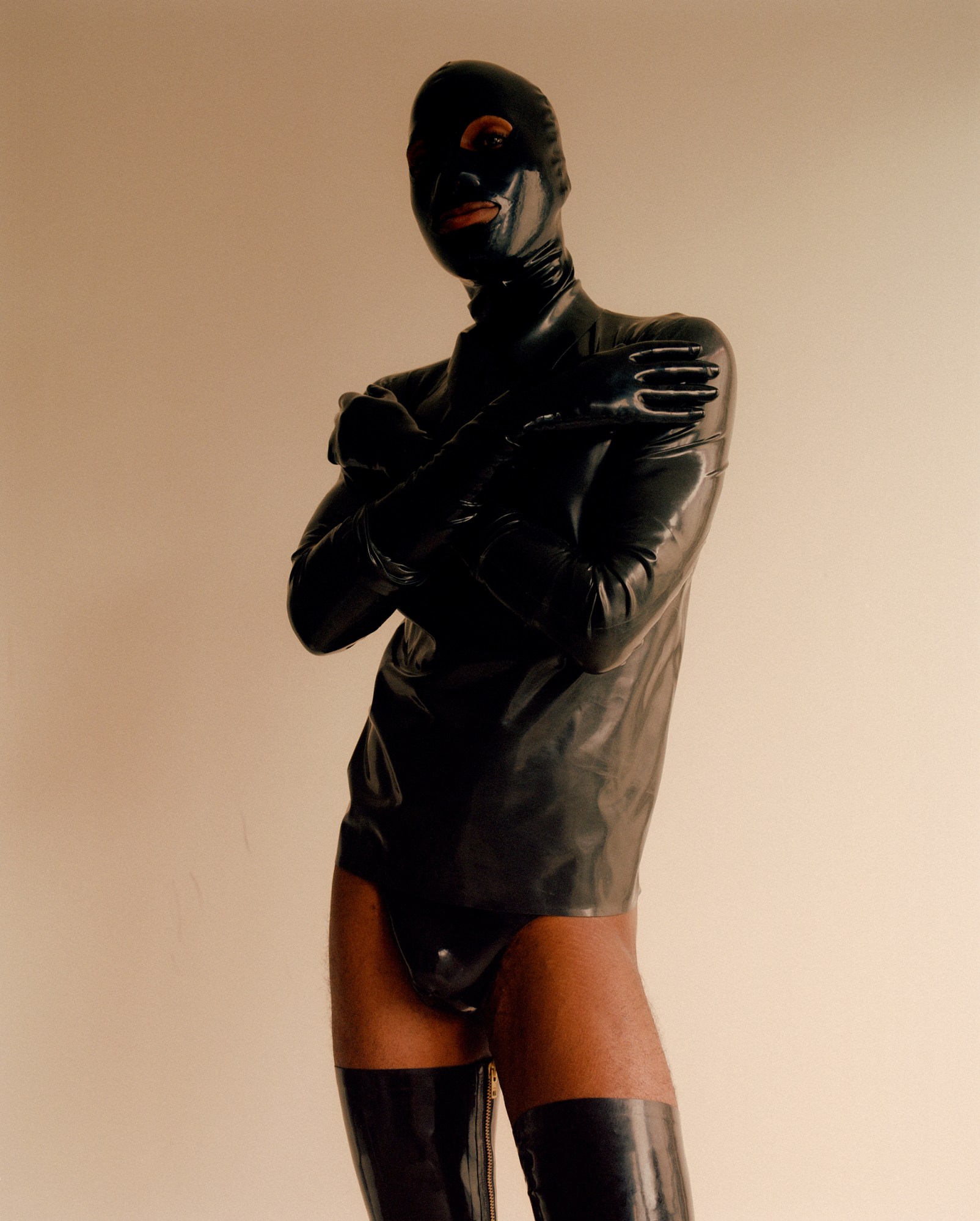
What inspired you to create a magazine focused on fashion, fetishism and dicks?
It was part of my final project at Central Saint Martins. I was studying fashion journalism and after researching for a topic for months, I came across this passage in Man Ray’s memoir, Self-Portrait, where he speaks about his journey to Paris and seeing trunks filled with wooden objects that included fetish idols from the Congo. Those idols are known as power figures, who are believed to have special powers that solve disputes and cure illness.
To the western gay, they were just little wooden objects and that got me thinking about the origins of fetish and how a lot of it is to do with power and the deceptions of power. When you think about fetish or what fetishism means now in the more modern context, especially with clothing and fashion, it’s all about the power of dress and the whole lineage of that. So from that, I started looking into sex, pleasure and the relationship between it. That’s how DICKPRINT was born.
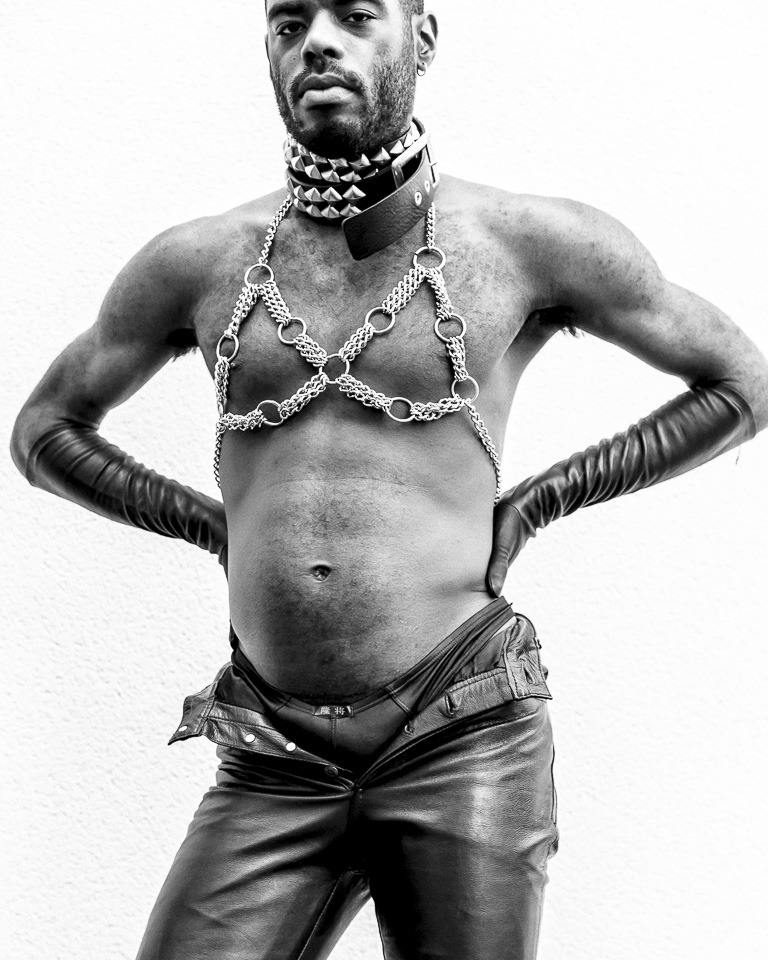
The name of the magazine is bold. Why DICKPRINT? What does it mean to you?
DICKPRINT is a double entendre. It’s the contemporary idea of fetish and dicks. There’s literally a dick in print. That’s just what it is. Additionally, I felt like a lot of gay men’s magazines come across as aggressive. And yes we can be very sexual, there’s nothing wrong with being hypersexual, but that sexuality is always depicted aggressively and that’s the issue. If you think about it, mainstream gay culture hasn’t shifted in 30 to 40 years, and that gave me the fire to want to do my own gay men’s magazine. I wanted to show that there’s more to our existence than what’s being depicted.
Fetishism is one of the key elements of DICKPRINT. Could you talk me through your decision to explore that?
It was also about the power of dress, which is something we often disregard. There’s a lot of power play in our day to day lives through fashion. What you choose to wear is a statement of your power. Just knowing that you have the power to create an impact through fashion is something, and nothing makes more of an impact than fetishism. Think about how you style yourself when you go to a job interview: you might wear a nice suit to make a good impression. Same for when you’re feeling sexy and you wear a pair of leather trousers or a silk thong. It’s all power play.
Another key element to DICKPRINT is the essence of gay culture. As a black gay man, how important was it to make sure everything in the magazine is represented, explored and displayed perfectly?
One thing I didn’t want to do was sanitise gay history and gay culture. DICKPRINT explores that really huge part of our community that people love to stigmatise. Whether people want to admit it or not, fetishism, sex and the body is a part of our culture and that’s what makes this magazine so important. When I started researching, I found that a lot of gay men’s magazines were opting to tackle this part of our culture on a very superficial level. They weren’t exploring the reasons behind it, and I found that frustrating. So, when I started putting DICKPRINT together, I made sure to research specific topics and people.
I was blown away by Ajamu, a Jamaican queer artist in Brixton who ran sex parties exclusively for black gay men in the mid to late 90s. I never knew about these things, which is exactly why I put together this publication. I also went to the Bishopsgate Institute and discovered that the first black gay LGBT meeting happened in Camden. I’m on the fence when it comes to calling this a black publication only because it’s more than that. It’s for everyone like me and as a black gay man, I am speaking to people that will be able to understand my experiences. It’s for boys who like boys and those merely curious. If you’re curious, read it, pick it up, it’s interesting.
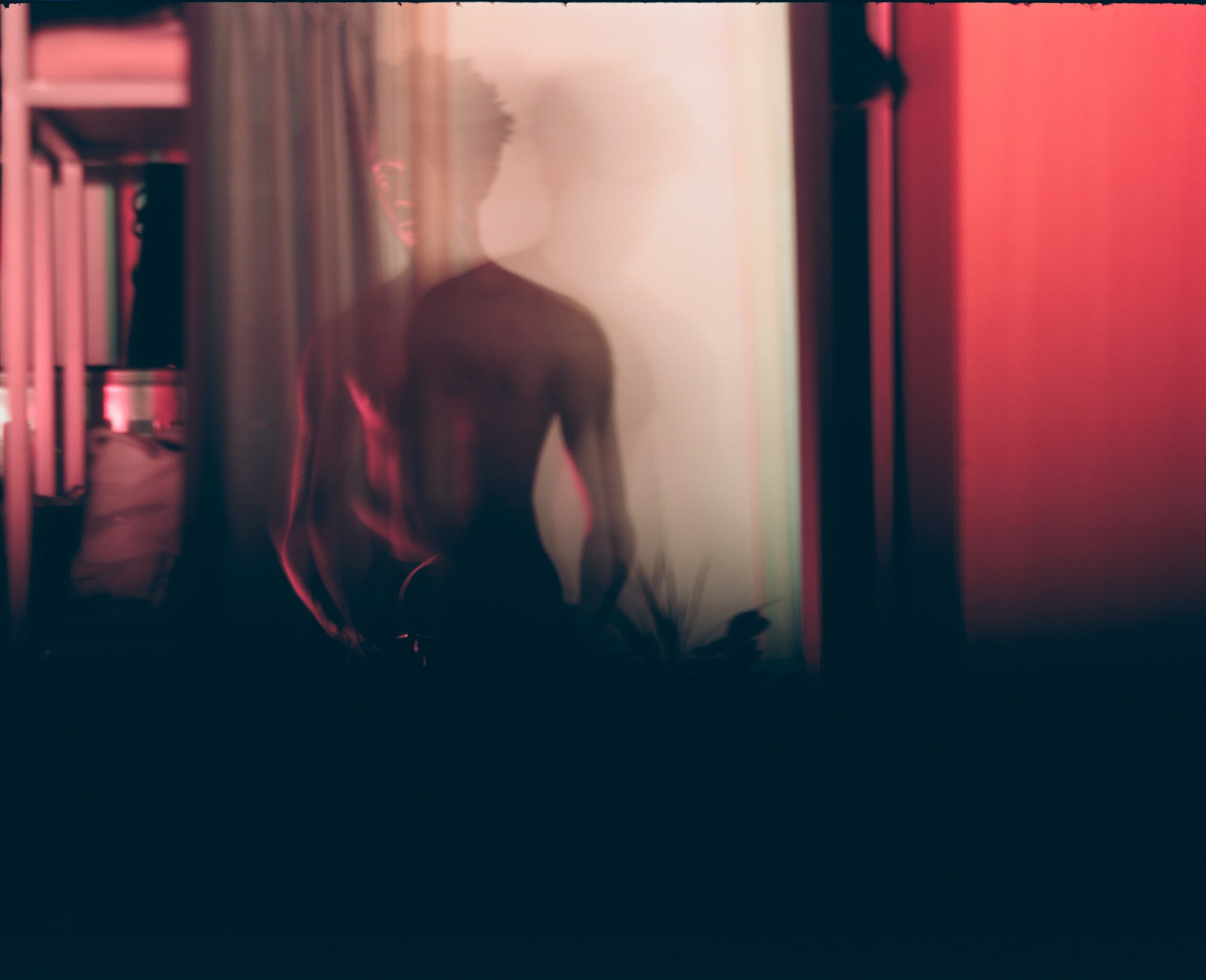
The majority of the people who worked on or are featured in DICKPRINT are gay black men. I am assuming that was a conscious choice.
I feel like whenever queer black men are presented in mainstream gay culture, it’s through the eyes of white men and I feel like there’s often a lot of subtle or overt sexual racism in those portrayals. I wanted the magazine to be shot and styled by black queer men who love themselves and their bodies and want to communicate that through the work. But also anyone who shared my vision, understood what I wanted to push and could execute it. Kyle Weeks shot Pimp My Gimp and he did so beautifully. I’m super thankful to have had those few hours with him. And the same goes for Daniele Fummo who shot another editorial called Rough and Ready.
How was it working alongside Ibrahim Kamara and Ola Ebiti on the fashion and styling aspect of DICKPRINT?
Ibrahim Kamara is a huge inspiration to me. He taught me the value of community which I’m sure he learned from the Buffalo Movement and Barry Kamen. Ibrahim really enlightened me on those parts of our community that have passed down teachings from their generation, things like learning how to value yourself and value what you do. Ibrahim helped me feel confident and own who I am. And that goes for all of my friends in my circle including Ola, Mofe, Patrick, Rene, Natasha, Sakile — they’ve all helped build my confidence.
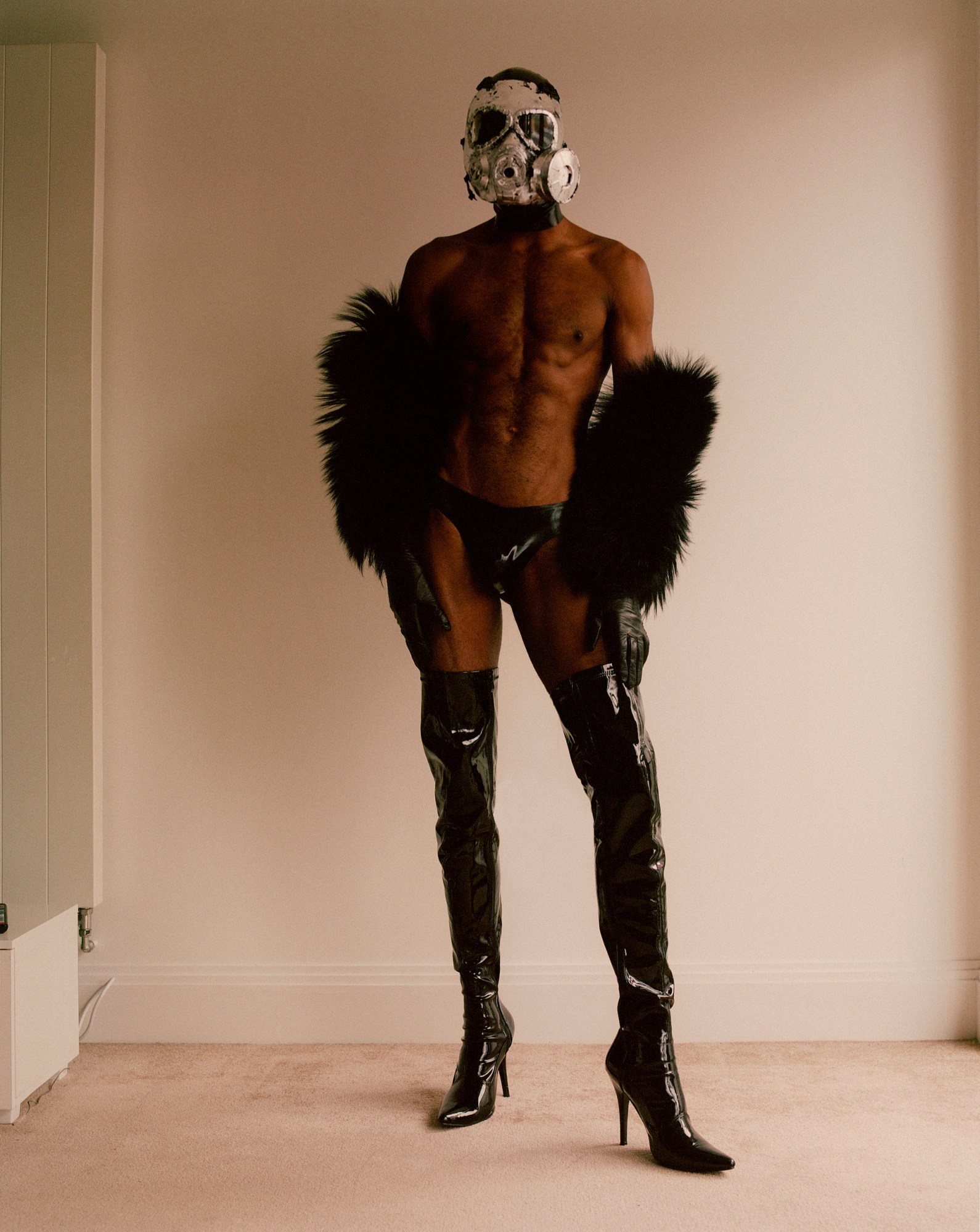
Can you talk more about your vision of uniting fetish fashion and nudity?
I spoke with The London Leatherman — an iconic leather fetish brand that has just relaunched. They were big in the 1970s and ‘80s but when Ken, the owner, died in the 1990s, the company went defunct.
I also used Levi’s, Libidex Latex and Breathless Boutique Latex. A few pieces actually came from students at Saint Martin’s and this lovely lady named Ruby who makes fetishistic leatherwear for women under her brand, RM Leathers. I decided to mix things up and put those pieces on men because obviously, DICKPRINT is for boys. My vision was to always try and stay with those recognisable kinky looks but make it interesting and not so binary or hyper-masculine. I like to mix things up and have fun with fashion.
What does the future hold for Kacion Mayers and DICKPRINT?
The launch of DICKPRINT of course! I’m super excited about it. I’ve got a private exhibition with MATCHES Fashion taking place on the 9th July. That’s gonna be a one-day event for everyone to enjoy. That’s when I’ll be launching the magazine.
DICKPRINT is available for pre-order here.
